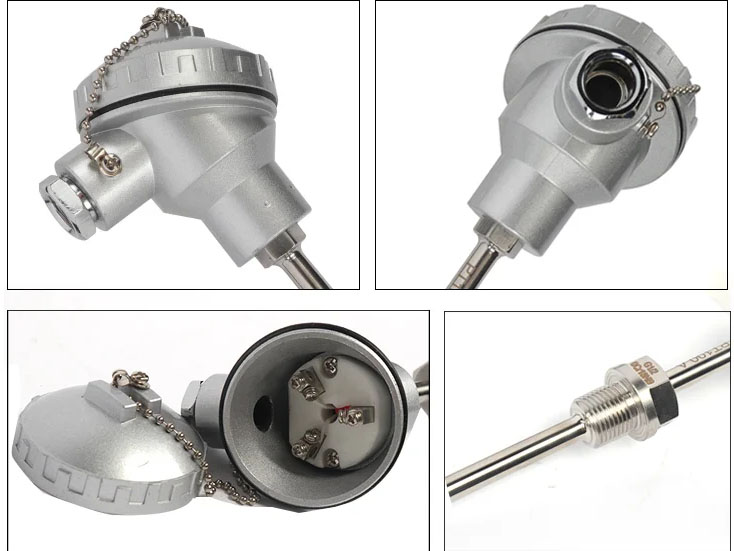K-type thermocouple is a commonly used temperature sensor, and its material is mainly composed of two different metal wires. The two metal wires are usually nickel (Ni) and chromium (Cr), also known as nickel-chromium (NiCr) and nickel-aluminum (NiAl) thermocouples.
The working principle of K-type thermocouple is based on the thermoelectric effect, that is, when the joints of two different metal wires are at different temperatures, an electromotive force will be generated. The magnitude of this electromotive force is proportional to the temperature difference of the joint, so the temperature value can be determined by measuring the magnitude of the electromotive force.
The advantages of K-type thermocouples include wide measurement range, high accuracy, good stability, fast response time, and strong corrosion resistance. At the same time, it can also be used in various harsh environmental conditions, such as high temperature, oxidation, corrosion and other environments. Therefore, K-type thermocouples are widely used in industry, energy, environmental protection, medical and other fields.

When manufacturing K-type thermocouples, appropriate metal materials and processes need to be selected to ensure their performance and stability. Generally speaking, nickel-chromium and nickel-aluminum wires have high purity requirements and require special smelting and processing processes. At the same time, attention needs to be paid to ensuring the quality and stability of the joints during the manufacturing process to avoid problems such as temperature drift or failure.
Generally speaking, K-type thermocouples are mainly made of nickel and chromium metal wires. Their performance is stable and reliable, and they are widely used in various temperature measurement fields. In practical applications, it is necessary to select the appropriate thermocouple model and specifications according to the specific use environment and requirements, and perform correct installation and maintenance to ensure its measurement accuracy and service life.
The above is a brief introduction to the K-type thermocouple material. I hope it can help you better understand the working principle and application of this temperature sensor. If you need more detailed information or picture links to better understand the material and structure of K-type thermocouples, please feel free to ask me a question and I will provide it to you as soon as possible.
Post time: Mar-04-2024




